Ryan Hall's Blog, page 120
October 12, 2017
Hash Hound Harriers: A Tradition That Cures Hangovers?
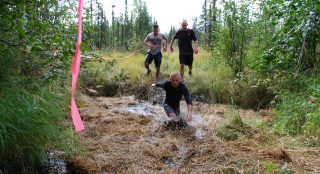
Photo: Flickr
I live in Fort Collins, Colo., where beer is a hobby that is often combined with sports. However I was surprised to learn that beer-focused running dated back to World War II.
The run: The Hash Hound Harriers. The year: 1938. A handful of British colonial officers in Malaysia banded together on a Monday evening (good for them) to run away their weekend hangovers. They named themselves the “Hash House Harriers” after a house most of them lived in.
During the war, the group was not as active, but started again in 1946. The clubs recorded their objectives in 1950. The goals were to remain fit, feel younger, get rid of hangovers and get thirsty enough to drink beer.
From there, Hashing chapters started forming all over the world. Today there are over 2,000 groups in existence.
What are compelling reasons to join? Well, there is beer. And…no, that’s all you need to know. There is beer.
What sets hashing apart?
Hare and Hounds style. The group has a designated “hare” who leads the chase. The hare takes a head start to make a trail. Then, the group of “hounds” sets off to chase them. If the hare is “caught,” that person becomes the new hare.
Trail Markings and Callings. Trails are typically marked with chalk, sawdust or flour. Newer variations in snow use colored water splashes. Fake trail detours allow stragglers to catch up. Shrieks from horns, whistles or shouts of “On-On” are heard from front runners when the correct trail is found. Trails can vary between out and backs, loops, and destination runs. No matter where you end up, drinking is involved.
Nicknames. Group members rarely go by their real name. Instead, everyone is given a “hash name” based on something epic, embarrassing or an attribute of their appearance. If a member complains about their names or attempts to name themselves, they are intentionally given simple and boring names such as “glasses.”
Tradition: Keeping up with old traditions is one of the many things that makes hashing so awesome. Some of these traditions include:
Group Shirts. Easily identified by the outline of a human footprint, it might also be accompanied by their phrase “on-on.”
Socks. Knee high socks to protect from any elements, such as water, mud, thorns, etc.
Themed Runs. Themed races are held annually to raise money for local charities. The most common is the Red Dress Run. In 1987, group member had a high school friend come for a visit. She came straight off of the plane to meet him, and without changing, she ran with them in her red dress and heels. The tradition stuck.
Next time your run feels monotonous and lonely, look up the nearest hashing event in your area or any socially based run. If you’re a beer enthusiast with a running problem, definitely add a hash event to your bucket list.
RELATED: Serving Up Running Shoes and Fresh Microbrews
The post Hash Hound Harriers: A Tradition That Cures Hangovers? appeared first on Competitor.com.
October 11, 2017
4 Pilates Moves For Runners That You Can Do Anywhere

Part stretch, part strength, with a focus on alignment, Pilates is a great workout. But Jae Gruenke, founder of The Balanced Runner, explains that with a few tweaks, you can tailor the for-everybody exercise into something that benefits runners specifically.
Do the following four moves—with Gruenke’s tweaks—prior to a run, and they can help you unkink yourself from the position your desk chair or laptop put you in all day (flexed hips, hunched shoulders). Alternatively, save them for after a run (or a long day at work) and let them help imprint what good movement patterns feel like in your body even when you’re tired.
RELATED: Cross-Training Classes That Are Great For Runners




The post 4 Pilates Moves For Runners That You Can Do Anywhere appeared first on Competitor.com.
NYRR Announces Elite Field For USATF 5K Championships
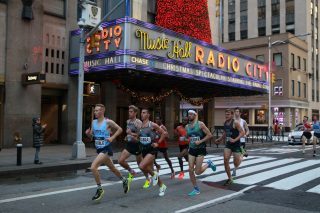
Photo: NYRR
New York Road Runners have released the elite field for the 2017 Abbott Dash to the Finish Line 5K and USA Track & Field (USATF) 5K Championships, taking place on Nov. 4. It includes ten Olympians and six runners who were part of Team USA at this year’s IAAF World Championships.
Headlining the men’s race are Matt Centrowitz, Ben True and Paul Chelimo. Centrowitz is a two-time Olympian who won the gold medal in the 1500 meters at the 2016 Rio Games. True set the current 5K American record of 13:20 at the B.A.A 5K this past April. Chelimo has been a force in the 5000 on the track, capturing the silver medal at the 2016 Rio Olympics, as well as the bronze medal at the 2017 IAAF World Championships. Joining them are Olympians Leonard Korir and Hassan Mead.
The women’s race is also a showcase of Olympians as well. Known primarily for the marathon, including a 5th place finish at the NYC Marathon in 2014, Desiree Linden will instead opt for the much shorter 5K distance this year. Also entered are Brenda Martinez and Abbey D’Agostino. The Dash to the Finish marks D’Agostino’s return to competition after tearing her ACL & meniscus during the 5000 meters at the Rio Olympics.
The Abbott Dash to the Finish Line 5K kicks off the NYC Marathon weekend. The race begins near the United Nations before crossing the city on 42nd Street. Runners then head up 6th Avenue to Central Park, where they complete the race at the marathon finish line. It will be broadcast live on USATF.tv. To see the rest of the elite athlete start list or to register for the event, go to nyrr.org.
RELATED: The Top Americans Running This Year’s NYC Marathon
The post NYRR Announces Elite Field For USATF 5K Championships appeared first on Competitor.com.
5 Spots To Check Out Along The Rock ‘n’ Roll Brooklyn 5-Mile Course
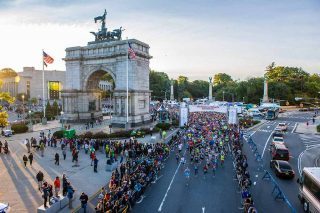
Grand Army Plaza, Photo: Courtesy of Rock 'n' Roll Marathon Series
Need something to focus on while you’re running this weekend’s Synchrony Rock ‘n’ Roll Brooklyn 5-Mile race—in addition to the bands and your fellow competitors? There’s something along the course to feed your interest, no matter what it is. Get the intel on five spots—plus some talking points (or thinking points, if you’re at your threshold) to make the miles fly even faster.
FOR THE ART LOVER: The Brooklyn Museum
NYC’s third largest museum isn’t the only place to be at the start of the race, it’s the place to be on the first Saturday evening of the month, when admission and entertainment is free. Each month has a different roster, but there’s entertainment all night long. October’s lineup even featured a salsa party with lessons.
Ask your friends if they saw: Last year’s exhibit on The Rise of Sneaker Culture, which featured about 150 pairs of sneaks—including the iconic Nike waffle trainers, whose soles were prototyped on Bill Bowerman’s wife’s waffle iron. If not, tell them they can still hit the museum now and see animal mummies, plus a large global collection that spans works from Ancient Egypt to of-the-moment artists.
FOR THE GARDENER: Brooklyn Botanic Garden
To think of the Brooklyn Botanic Garden as home of the annual cherry blossom festival is to cheat the rest of its impressive 52 acres—and the other 51 weeks of the year—worth the attention. There’s always something amazing in the conservatories of all types, including a Japanese garden, rose garden, Shakespeare garden, and even a rock garden—plus a visitor center with a 10,000-square-foot green roof (yes, with plants growing on it).
Impress your friends: Casually mention that the Brooklyn Botanic Garden happens to have a great Grammatophyllum speciosum specimen—that’s thought to be the largest orchid species in the world.
FOR THE KID AT HEART: The Carousel
Not just any carousel, this fanciful ride was carved in 1932 largely by Charles Carmel, who loved outfitting the horses in the Coney Island style…and if you know Coney Island, you know that means quirky. The horses are flamboyant, decked out in fish scale armor and even imperfect teeth, and they’re on board with two dragon chariots, a deer, a giraffe, and a lion (all carved, of course). The carousel—once in disrepair—now runs at more than 100 years old…and so should you!
Discuss: The training plan that will let you and your friends claim your trophies at age 100.
FOR THE FOODIE: Grand Army Plaza Greenmarket
Across the parkway, between miles three and four, Brooklynites are busy buying just-picked fruits and vegetables, pickles, baked goods and, on Oct. 14, grains. On that day, The Greenmarket Regional Grain stand will be featuring regionally grown whole-grains and flours. And there will be hops: local craft beer producers who will also sell their goods at this event. (Find out more here: https://www.grownyc.org/DrinkLocal.)
Decide: Whether today’s all about pilsner or stout.
FOR THE HISTORY BUFF: Lookout Hill
As you make the final left-hand turn of the course, off to the right is Lookout Hill, the site of a Revolutionary War battle—it’s where the “Maryland 400” stood to hold the hill while Washington’s army, along with Washington himself, fled across the East River. Along with a monument to the Maryland 400, you might see goats (you’re not hallucinating). While the Brooklyn Botanic Gardens uses more traditional pruning methods, the park employed four goats in the Lookout Hill area this year to clear up invasive species so native ones can be planted in their place.
Consider: What the park was like in 1776. Historians say it was forest, field, and swampland. It was officially opened as a park in 1867—and was designed for Olmsted, Vaux & Company. Yes, the same people who designed Central Park nearly 10 years earlier.
RELATED: A Runner’s Guide To Exploring Brooklyn On Race Weekend
The post 5 Spots To Check Out Along The Rock ‘n’ Roll Brooklyn 5-Mile Course appeared first on Competitor.com.
10 Pieces Of Running Gear That Give Back To Charity
We have rounded up the top gear that gives back all while giving you the best performance possible. Want to take it further? Make daily runs count, too!
The app Charity Miles allows you to select from more than 30 specified organizations to donate to, and it uses your phone’s GPS (if outside) or your accelerometer (if inside) to log physical activity (running, walking, biking, shoveling snow). To date, the app has earned more than $2.5 million for the National Parks Foundation, Ironman Foundation, St. Jude Children’s Hospital, (Red) and more.
RELATED: 5 Products Made With Eco-Friendly Runners In Mind










The post 10 Pieces Of Running Gear That Give Back To Charity appeared first on Competitor.com.
October 10, 2017
Keflezighi and Flanagan Make Final Preparations For NYC Marathon
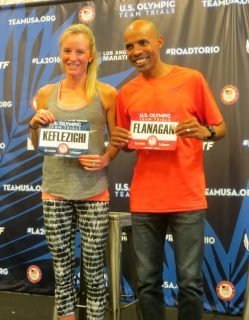
Shalane Flanagan and Meb Keflezighi at the pre-race press conference in Los Angeles for the 2016 USA Olympic Team Trials Marathon last February. Photo: Jane Monti for Race Results Weekly
The darlings of American marathon running are heading back to New York, hoping to write momentous chapters in their already impressive biographies. For Meb Keflezighi, the New York City Marathon will be the final professional race of his storied career, while Shalane Flanagan, who debuted in the Big Apple in 2010, makes her much-anticipated return to the 26.2-mile distance on Nov. 5, after an injury sidelined her earlier this year.
“It’s very emotional coming back,” said the 42-year-old Keflezighi on a conference call, who will be contesting the five-borough race for the 11th time. “After I did my first New York City Marathon in 2002 I said I never wanted to do another one again.” But following that challenging debut, he rebounded to author one of the greatest resumes in the sport: collecting silver in the 2004 Olympics in Athens, and winning both New York (in 2009) and Boston (in 2014, setting a career best 2:08:37). “I’m so excited, but at the same time it’s bittersweet, obviously.”
RELATED: Meb Reflects On His Legacy and Approaching Retirement
Flanagan, 36, was due to run in Boston earlier this year, but a back injury (a fracture in her iliac crest) forced her to scratch that plan. She recovered in time for an abbreviated, but productive, track season last summer, including a 14:58.99 5000m, and heads into New York feeling refreshed.
“My back is 100 percent,” said Flanagan, a four-time Olympian whose 2008 bronze medal in the 10,000 meters was recently upgraded to silver following a competitor’s retroactive drug bust. “I actually think the injury this past winter was a giant blessing for me. I’ve had uninterrupted training throughout my career, and that was my first major injury. While at the time it was really heartbreaking to have to miss the Boston Marathon this spring, I believe my body really needed that rest. I think there was a point of overtraining over the last few years and not really identifying it.”
Both athletes used Mammoth Lakes, Calif., as their key training base during their build-up to the iconic race, taking advantage of the town’s 7,000-foot altitude. Flanagan returned home to Portland, Ore., only last Saturday, while Keflezighi is still in Mammoth where he used to live (he now lives in San Diego).
“I’m healthy, which is a big battle,” said Keflezighi, whose most recent marathon was a 2:17:00 effort for 13th place in Boston last April. “I hope to be very competitive. I’m here up in Mammoth Lakes, away from my wife and kids for five weeks. I want my last one to be a good one. Many people think it’s going to just be a show, but I would regret if I didn’t give it everything I had. I usually would be fearless going out there competing against the best of the best. We all know that the mind and the body need to be on the same page.”
RELATED: What Meb Learned From Time Spent Running With His Family
Flanagan, whose injury had put her schedule out of synch with her Nike Bowerman Track Club teammates, had to log the majority of her training solo, even staying one week at a remote cabin with no internet or cell service. But she was able to feed off Mammoth’s thriving running community.
“Just knowing other athletes around are training hard really has a huge impact on me,” she said of her five-week stint. “I like to know that if I’m suffering other people are suffering, too.”
Flanagan said she maxed out at about 130 miles per week while training in Mammoth, something she said was critical for her to be competing in the marathon’s final stages.
“I’ve learned over the last few years that at the end of the marathon what’s not failing me is my cardiovascular system, it’s definitely my legs,” said Flanagan, who ran her career best of 2:21:14 in Berlin in 2014. “I’m hoping that those really big miles I’ve put in will pay off for me on Nov. 5.”
On the heels of last Sunday’s Chicago Marathon, both Keflezighi and Flanagan said they are at least a little uneasy about the results posted by Galen Rupp, who won the men’s race, and Jordan Hasay, who moved past Flanagan into second on the U.S. all-time list with a 2:20:57 clocking in third place on the women’s side. Both athletes run for the Nike Oregon Project which, according to leaked documents, is still under investigation by the United States Anti-Doping Agency for potential rules violations. No wrongdoing has been proven, however, and the program’s coach, Alberto Salazar, has steadfastly stated that no prohibited substances or methods have been used.
“The NOP has been under investigation for the last two years, so as a fan of my own sport it’s hard to have full excitement and faith when you don’t know all the facts yet,” remarked Flanagan. “There’s still an investigation going on, so it’s hard to truly and genuinely get excited about the performances that I’m watching.”
Keflezighi was also concerned. “Obviously I’m happy for Galen and Alberto, but there are things that are still going on,” said Keflezighi. “There’s a lot of speculation, and I would love to know what’s going on and how far it’s gotten.”
(c) 2017 Race Results Weekly, all rights reserved
RELATED: The Top Americans Running This Year’s NYC Marathon
The post Keflezighi and Flanagan Make Final Preparations For NYC Marathon appeared first on Competitor.com.
This Video Will Make You Want To Watch The NYC Marathon
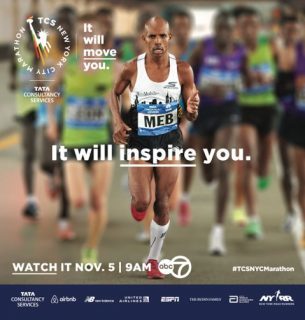
Image: NYRR
Anyone who has ever run or watched the New York City Marathon can vouch for how emotional the race can be. New York Road Runners is tapping into those feelings with their new ‘It Will Move You’ campaign. A series of print, digital and television advertisements captures the physical and emotional feelings around the entire NYC Marathon experience.
At the center of the campaign is a 30-second video inviting people to tune into the race. The spot intersperses scenes from the marathon with declarations about the race, such as ‘It will inspire you,’ and ‘It will push you.” So far the commercial has been shared widely on social media.
“Our new ‘It Will Move You’ campaign brings to life the transformative power of running, and the incredible impact of the TCS New York City Marathon,” said Ronnie Tucker, senior vice president of marketing at New York Road Runners. “The campaign captures the vast range of emotions that marathoners, spectators, volunteers, and even viewers at home feel as part of this awe-inspiring event.”
The campaign will also feature what NYRR calls “digital cheer cards.” Friends and family will be able to make digital versions of race signs on the TCS New York City Marathon Mobile App starting in late October. On race day, those cards will be displayed on a screen at 90th Street and Fifth Avenue as runners pass by.
The New York City Marathon takes place on Sunday, Nov. 5. It will be broadcast live on WABC-TV in the New York area from 9:00 a.m. to 2:00 p.m. EST. Outside of the New York area, it will be shown live on ESPN2 from 9:00 a.m. to 12:30 p.m. EST.
RELATED: The Top Americans Running This Year’s NYC Marathon
The post This Video Will Make You Want To Watch The NYC Marathon appeared first on Competitor.com.
Overcoming the Obstacle of Injury And How To Stay Sane During Recovery


I’ve been trying to think of how to spin the process of overcoming injury in a positive way. Yay for late nights, no early morning sessions in the dark, extra round of drinks on Friday night; but the façade only carries me so far. Injuries suck. I don’t want to tell you otherwise, but I do want to show you how injuries can be a part of success. It doesn’t mean it’s easy or fun, but here are some tips on how to stay mentally strong throughout your healing time based off of my personal experience. And lastly, I share the difficult, yet so important, necessity of slow progression back to training. Since we can’t get running, let’s get reading.
Part of Success
While it is hard to believe, injuries are part of the pathway to success. Each injury provides an opportunity for growth as a person and athlete. An injury means I pushed the body too hard, the miles were too long, the life stress was too much, or there was too little rest. Often it’s a combination of multiple factors that have created this perfect storm. What it comes down to is that I pushed my body to the point where it wasn’t able to keep up with recovery to match the training load.
The way we all get better in many aspects of life is by pushing the limits to see what we are truly capable of. Even though injuries suck, it shows that we are working hard towards a goal, and that with smarter training, and recognizing which factors we need to be more cautious with in the future, we can heal and get back to training with an even better plan towards success.
RELATED: 5 Things The Most Successful Runners Do Every Day
Mental Aspect
Being committed to a goal means that you don’t just sort of do something, you do it with mind, soul, and body fully invested. I’ve had my fair share of great performances, devastating injuries, solid training blocks, season ending illnesses, and incredible moments of seeing commitment and perseverance through it all pay off two fold.
The emotional and psychological part of being a runner with an injury is that running isn’t just something that’s done occasionally. Runners are a community and running is a lifestyle. We prioritize our training, we structure life around getting in our miles, we absorb what we do and it becomes part of who we are. Injuries derail us from running, and then we feel lost, out of sorts, and on the brink of an identity crisis. Who am I if I’m not a runner? Everyone handles their time away from the sport differently. A few key things that help me while I’m injured:
1. Stay busy. Use the time you would otherwise be running to catch up with friends, deep clean, travel, focus on your other hobbies, and emphasize resetting the body while keeping life moving forward. Often with injuries, it’s just a waiting game. Time has to pass for you to heal. And time flies when you’re busy!

2. Stay Sane. Sometimes I just need to sweat. Of course your options are varied based on the nature and location of your injury, but I utilize the pool, elliptical/elliptiGO, spin bike, hiking, lifting, core workouts, rock climbing, TRX, HIIT classes, bar classes, pilates, and yoga. When I had knee surgery, I even used the rower and arm bike. If I can get 30-60 minutes of exercise in the morning, I feel so much more positive for the rest of my day.
3. Stay Supported. The most crucial part of dealing with an injury is understanding what is wrong so you know how to heal it. Get the answers, then get a plan. I work closely with my support system of trusted physical therapists, chiropractors, doctors, coaches and mentors to develop a progression back to chasing my goals. Having those who you can lean on helps us not feel so alone in the process of recovery.
RELATED: The Mental Side of Recovery
The Slow Come Back
We take all this time off, and all we think about is running again. But when we finally get the go-ahead, it is essential to not rush fitness. I usually take a week to run lightly every other day. Only 20-30 minutes at a time. Coming back after surgery in 2014, my first run in 4 months was 2x5min jog with 5min walk in between. It was the best/worst run of my life. I was so elated to finally run again. And I was so devastated that it was so short. It made me feel like my goals were impossible. How could I ever run PRs and train 100 miles per week when I could only run 5 minutes at a time? (Just so you know, I was fine. Within the next year I ran a PR in every distance and qualified for the Olympic Trials.)
Taking your time, easing back to training, and listening to the body is how you will have a steady progression back to fitness. If you rush it, you risk having to start the healing process all over again. I hate this part, but having my husband being firm about my low mileage is something I so appreciate (even though we fight about it). I need him there to not let my crazies get me overzealous. Find someone who can help keep you accountable too!
I have good days during injury where I am positive and motivated. I do everything I am supposed to and I’m upbeat about getting through and coming out better on the other side. And then I have bad days where I am depressed about not running and unmotivated to cross train. I give up on my body because I don’t think it’s healing quick enough, and I’m not a fun person to be around. I’ve learned this is normal. But striving for more good days than bad is essential. Remember, you’re not alone, because within this awesome community of runners, mostly all of us can relate to being derailed at some point with injury. It is part of the process as we strive for success.
Until next time, stay mentally strong, ease back to training slowly, and I will see you out on the trails and roads again soon. Let’s get (back to) running!
RELATED: Here’s Exactly How To Crush Your Next Half Marathon
***
About the Author
Neely lives in Boulder, Colo., with her husband Dillon and their Vizsla, Strider. She enjoys the daily grind of training and competing as one of America’s top female distance runners. She has personal best times of 15:25 for 5K, 32:16 for 10K, 1:09 for the half marathon, and 2:34 for the marathon. In her free time, she enjoys helping others pursue their goals through her Get Running coaching business. Follow her on instagram or twitter @neelysgracey and learn more about Neely on her website www.neelyruns.com.
The post Overcoming the Obstacle of Injury And How To Stay Sane During Recovery appeared first on Competitor.com.
NYRR Announces A Big Change For The 2018 NYC Half Marathon
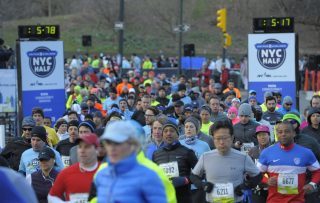
Photo: NYRR
Big changes are coming to the United Airlines NYC Half Marathon. The race, organized by New York Road Runners, is unveiling a brand new course for the 2018 race on March 18.
Since the event began it 2006, it has always run from Central Park to Lower Manhattan, with a few small changes taking place. However, the 2018 course offers a drastic new change. The race will start in Grand Army Plaza, right outside of Prospect Park in Brooklyn. Runners will then head down Flatbush Avenue and over the Manhattan Bridge. Once in Manhattan, the course cuts through the Lower East Side to the FDR Drive.
The rest of the race is somewhat familiar. It is part of the old course—but this year, runners will complete it in reverse. Following the FDR Drive portion, participants will run down 42nd Street, through Times Square and into Central Park. After nearly completing a loop of the park, the race finishes near West 75th Street.
The new course allows for more entrants as well. Over 22,500 runners are expected to take part in the 2018 race, up from almost 20,000 finishers last year. The NYC Half is consistently one of the most popular half marathons in the United States. It was the fifth biggest half marathon in 2016.
RELATED: The Top Americans Running This Year’s NYC Marathon
“This world-class race has become a bucket-list event for runners from the five boroughs, across the country, and around the world since its inception in 2006,” said Jim Heim, NYRR’s senior vice president, event development and production and technical director of the TCS New York City Marathon in a statement. “The new course offers an exciting challenge for runners with new stretches that have never before been part of a New York Road Runners event.”
If you want to run the 2018 NYC Half, application for guaranteed and non-guaranteed entry opens at 12:00 p.m. EST on Oct. 16, 2017, and will close at 11:59 p.m. EST on Nov. 30, 2017. Guaranteed entrants are those who have run four out of six qualifying races, are participating through a charity program or have run a time qualifier. All other entrants will be entered into a lottery. The drawing will take place on Dec. 6, 2017. Runners can sign up at nyrr.org.
The post NYRR Announces A Big Change For The 2018 NYC Half Marathon appeared first on Competitor.com.
The Love Letter Every Runner Wants To Receive

Photo: Shutterstock
Runners are not a typical breed. So you wouldn’t expect their love letters to be a typical outpouring of affection either. For runners, it is crucial to have a partner who understands and supports their goals.
This love letter was written to professional runner Neely Spence Gracey by her loving husband, Dillon. In it, he offers great suggestions for not only Gracey, but for all runners. Who else would swoon at the suggestion to get lots of sleep other than a long distance runner.
“I received a note today with 10 reminders from my husband,” said Gracey. “Do your love letters look like this? As a running nerd, my heart melts.”
Get lots of sleep.
Eat well after hard workouts and long runs.
Work into your runs.
Stay on pace.
Listen to your body (a day off is better than a season off).
Swim, bike, Elliptigo is great cross training when fatigued.
Get a massage.
Be selfish and make sure getting your needs met is priority.
Take a nap if you are tired.
Don’t stop loving me.
RELATED: 7 Ways To Support A Significant Other Who Runs
The post The Love Letter Every Runner Wants To Receive appeared first on Competitor.com.
Ryan Hall's Blog
- Ryan Hall's profile
- 21 followers



